My Favorite Hotels in Toronto
• 5-Star: Shangri La
• 4-Star: Delta Hotels
• 3-Star: King Blue
• For Families: Chelsea
• For Couples: Bisha
• Best Pool: Marriott
• Near Airport: Sheraton
• Train Station: Fairmont Royal York
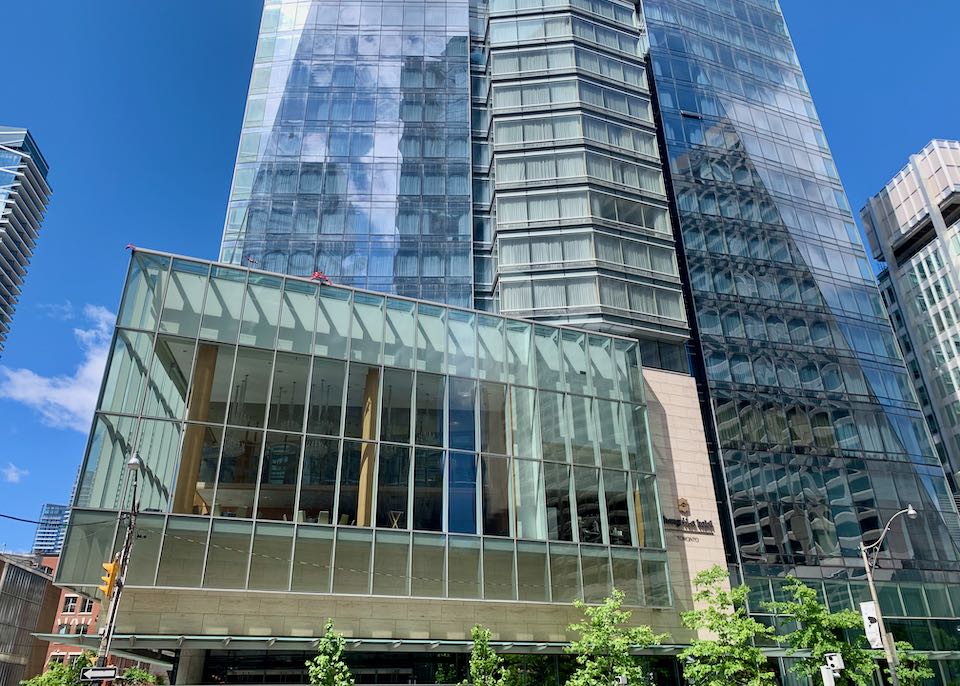
The Shangri-La is my favorite hotel in downtown Toronto. Trendy luxury in the center of several bordering neighborhoods: the Entertainment District, Financial District, and Queen Street West.
The Best Area to Stay in Toronto
I’ve lived in multiple neighborhoods in downtown Toronto – near Yorkville, on the Danforth, near the University, and in the Financial District – so I know the city well. “Downtown” Toronto encompasses a fairly large area that includes numerous neighborhoods, beginning with the shiny skyscrapers in the Financial District and the Entertainment District. This is where you’ll find the city’s celebrated CN Tower, and Toronto’s major sports franchises – the Toronto Blue Jays (MLB), Raptors (NBA), and Maple Leafs (NHL). The commercial and shopping district of Yonge-Dundas abuts the University of Toronto campus and the best museums in the city: the Art Gallery of Ontario, and the Royal Ontario Museum.
I was fortunate enough to go to an NBA finals game in Toronto. Lots of fun. Games for Raptors and Leafs are at Scotiabank Arena, walking distance from most downtown hotels.
To the north of the financial district, once hippy Yorkville is now home to Toronto’s poshest shops, hotels and art galleries. The adjacent district known as The Annex has a totally different vibe, with a lively student population and some of the most striking Victorian architecture in Canada.
The above neighborhoods contain most of the hotels in central Toronto – outside of this core it’s more likely to be apartment rentals until you hit the motels on the highways on the outskirts. Nevertheless, there is a lot more to experience outside of downtown Toronto. The Old Town area to the east of Downtown features St Lawrence Market, the artsy Distillery District, and hip Cabbagetown. Beyond here, the leafy Don Valley features the Ontario Science Centre and Aga Khan Museum, while the Eastside neighborhoods include the lakeside Beaches district and Greek-flavored Danforth. The hip Westside is a patchwork of intriguing neighborhoods, from ethnic enclaves Chinatown, Koreatown,and Little Portugal, to fashionable eating and drinking strips like Kensington Market, Little Italy, Ossington, Queen Street West, and West Queen West, with hip bars, restaurants, and boutiques.
In general, you don’t need a car to enjoy Toronto, unless you are set on exploring the far outer neighborhoods (and other regions of Ontario). The city is very pedestrian-friendly, with most neighborhoods easy to explore on foot (and very flat), though it is big – you’ll need to use public transport to move between areas. Though locals tend to moan about Toronto’s public transportation, combining buses, streetcars, and the subway system operated by the Toronto Transit Commission (also known as the TTC) with taxis (or Uber) will allow you to zip between all the neighborhoods mentioned here without much hassle. A single journey on any form of public transport costs C$3.25 (it’s a bit cheaper if you get a PRESTO re-loadable payment card).
The Best Places to Stay in Toronto
The trendy Four Seasons has an awesome location in the Yorkville neighborhood.
- Best Luxury Hotels in Toronto
1 Hotel Toronto • Delta Hotels by Marriott • Fairmont Royal York • Four Seasons • Hazelton • Hotel X • Omni King Edward • Ritz Carlton • Shangri-La • St. Regis- Best Boutique Hotels in Toronto
The Anndore House • The Annex • Bisha • Le Germain Maple Leaf Square • Le Germain Mercer • The Ivy At Verity • Kimpton Saint George • The Westlake Hotel- Best B&Bs in Toronto
A Seaton Dream • Beverley Place • By The Park • Making Waves Boatel- Best Cheap & Midrange Hotels in Toronto
The Clarence Park • King Blue • Hotel Ocho • The Palmerston • The Rex • Yonge Suites- Best Hostels in Toronto
The Only Backpacker’s Inn • The Planet Traveler • Samesun Toronto- Top TripAdvisor Hotels (Best Value)
One King West Hotel & Residence • Fairmont Royal York • Radisson Blu DowntownWhere to Stay in Toronto for…
- Best Neighborhood to Stay for First Timers/Sightseeing: Entertainment District or Yonge-Dundas
The two main Downtown neighborhoods are where most visitors end up in Toronto – most of the hotels are here, and they lie close to major clusters of bars, restaurants and shops, as well as the hub of the city’s public transportation network.Yonge-Dundas is a better choice if you want to be close to Eaton Centre and associated shopping, while the Entertainment District has slighter better eating options and is handy for the CN Tower and Rogers Center.- Most Romantic Neighborhood: The Annex
Strolling around the Toronto Islands, or exploring the leafy streets and shoreline of the Beaches neighborhood can be very romantic, but it’s not easy to stay in either place. The Annex, however, is one of Toronto’s oldest and most atmospheric neighborhoods, just north of Queen’s Park and adjacent to Yorkville. Popular with students from the University of Toronto and with immigrants from all over the world, the streets here are lined with gorgeous Victorian mansions and there are some delightful places to stay. You can catch a documentary at the historic Hot Docs Ted Rogers Cinema, or check out the whimsical collections at the Bata Shoe Museum, which displays Elvis’ “blue suede shoes” and Elton John’s platform boots. Other highlights include the Japanese soufflé pancakes at Fuwa Fuwa, and just to the north, two of the city’s most grandiose mansions: Casa Loma, a Gothic folly built between 1911 and 1914, and the dazzling Spadina House, an elegant Victorian pile that dates back to the 1860s.Best Hotels in The Annex
The Annex Hotel • Hotel phone: +1 647 694 9868
Kimpton Saint George • Hotel phone: +1 416 968 0010
Madison Manor Boutique Hotel • Hotel phone: +1 416 922 5579- Best Neighborhoods for Nightlife: West Queen West and King Street West
Good bars and clubs are spread out across the city, but the Westside is your best bet for a good night out. West Queen West, broadly the strip of Queens Street west of Bathurst, is home to numerous bars as well as some conveniently located hotels (The Drake and The Gladstone House among them). Highlights include the Bovine Sex Club, Otto’s Bierhalle, and Sweaty Betty’s.
• To the southeast, King Street West (between Spadina Avenue and Sudbury Street) is another nightlife hub (1 Hotel is the top place to stay near here), with a swathe of watering holes and dance clubs. We like the cocktails at Ruby Soho and trendy ping-pong club SPIN Toronto for table tennis and cocktails.
• On the Eastside, The Danforth/Greektown isn’t just good for Greek food – there is a flourishing nightlife scene here too, beginning with the live acts at Danforth Music Hall, and the drinks at Louis Cifer Brew Works, The Wren (1382 Danforth Ave), and many others.
• The Ossington Strip (Ossington Avenue between Queen and Dundas) is another nightlife hub, home to Bellwoods Brewery, The Painted Lady, and more.
• The Horseshoe Tavern on Queen Street West remains one of the best places to catch live music in the city.- Best Neighborhoods for Food and Restaurants: Kensington Market & Little Italy
Toronto is a foodie city, with numerous great spots Downtown and a host of intriguing restaurants in Chinatown, Greektown, Koreatown, Little Portugal, and on the main entertainment strips of King Street, Queens Street, and Ossington Avenue. But if you can only hit one neighborhood, make it Kensington Market (between Dundas Street West and College Street, west of Spadina Avenue and Downtown). This former Jewish enclave is essentially an open-air mall, with cafés and fresh-food stalls of every type; Chinese bakeries, fishmongers, dried-goods shops, fresh tortilla sellers, and every cuisine imaginable, from Jamaican and Mexican, to Texas barbecue, Japanese sushi, doner kebabs and kombucha cafes. Highlights include the Vietnamese food at Saigon Lotus, Native American-themed Pow Wow Café (213 Augusta Ave), known for its Ojibwa-style fry bread, and Scandinavian-inspired Fika Café. West along College Street, Kensington Market melts into Little Italy, between Bathurst and Ossington, with another gaggle of good restaurants and bars. Sip cappuccino at local favorite Café Diplomatico, sample the authentic gelato at Sicilian Sidewalk Café (712 College St), enjoy the board games at Snakes & Lattes, dine on classic Italian food at Il Covo, or snack on late-night tapas at Bar Raval, celebrated for its Gaudí-esque décor.- Best Neighborhood for Shopping: Yorkville and West Queen West
The Eaton Centre in Downtown Toronto is a massive mall at the heart of the city’s traditional shopping district, but discerning shoppers will enjoy perusing the boutiques of Yorkville. This is primarily high-end boutique territory – with the likes of Chanel, Holt Renfrew, Prada, Hermes, and Gucci represented. West Queen West is another hub of for independent boutiques; vintage and secondhand fashion at Garb, Gravity Pope, and Cocktail Emporium, plus Antikka Cafe And Records (960 Queen St W), Paul Petro Contemporary Art, and many others.
• Kensington Market, Queen Street West and the Distillery District are all great places to shop
• Some 4.5 miles (7km) north of Downtown, seasoned shoppers might also want to check out the hip neighborhood of Yonge & Eglinton (aka “young & eligible”). In addition to the Yonge Eglinton Centre mall, there are some great stores up here, with a huge branch of Sporting Life, BMV Books, and many others.- Best Neighborhoods for Local Vibe: Wychwood Park and Roncesvalles
Toronto is a city of intriguing neighborhoods, but these are two of our favorites. Wychwood is a relatively quiet residential area in Midtown (roughly bounded by Bathurst Street to the east, Oakwood Avenue to the west, St. Clair Avenue West to the north, and Dupont Street to the south), especially interesting along St Clair Avenue – you are unlikely to see other tourists here. Highlights include the food at Artscape Wychwood Barns, an old streetcar hub turned into arts and event space, host to Wychwood Farmers Market and the tasty Filipino cuisine at Lamesa. The Dismount Bike Shop is actually a great place for a coffee, as well as bicycle gear. Roncesvalles (aka “Roncy”), 3.7 miles (6km) west of Downtown, is like a village in the city. Roncesvalles Avenue between King Street and Dundas Street West is a charming strip of coffee shops, used bookstores, restaurants and bars. Shop for kids clothes at Early Bird & Worm, sample the Polish food at Cafe Polonez or Chopin Restaurant, or just hang out at Cherry Bomb Coffee.
• Both neighborhoods are accessible by bus, but if you want to stay the night, apartment rentals are the best way to go. By The Park Bed & Breakfast is a good alternative near Roncesvalles, but there are no hotels in Wychwood.- Best LGBTQ+ Neighborhood: Church-Wellesley Village
Toronto has a flourishing LGBTQ+ scene, with the heart of the community Church-Wellesley Village, in the northeast sector of Downtown. It’s especially fun during the Pride Toronto festival, with the main drag of Church Street a hopping destination at night. One of the most storied bars here is Woody’s, open since 1989, while Crews & Tangos (opposite at 508 Church St) is known for its drag shows. Other highlights include the shows at Buddies in Bad Times Theatre, the original Kinka Izakaya, and Glad Day Bookshop, a pioneering LGBTQ-themed bookstore open since 1970.Best Hotels in and around Church-Wellesley Village
• Holiday Inn Downtown Centre • Hotel Phone: +1 416 977 6655
• Courtyard by Marriott Downtown • Hotel Phone: +1 416 924 0611
• Victoria’s Mansion Guest House • Hotel Phone: +1 416 921 4625
• Town Inn Suites • Hotel Phone: +1 416 964 3311- Unsafe Areas of Toronto
Toronto is generally quite safe by North American standards, though the usual precautions should be taken at night. Neighborhoods in the far eastern sectors of the city (Parma Court, Crescent Town) and Scarborough tend to post higher crime rates.The 7 Best Neighborhoods in Toronto for Tourists
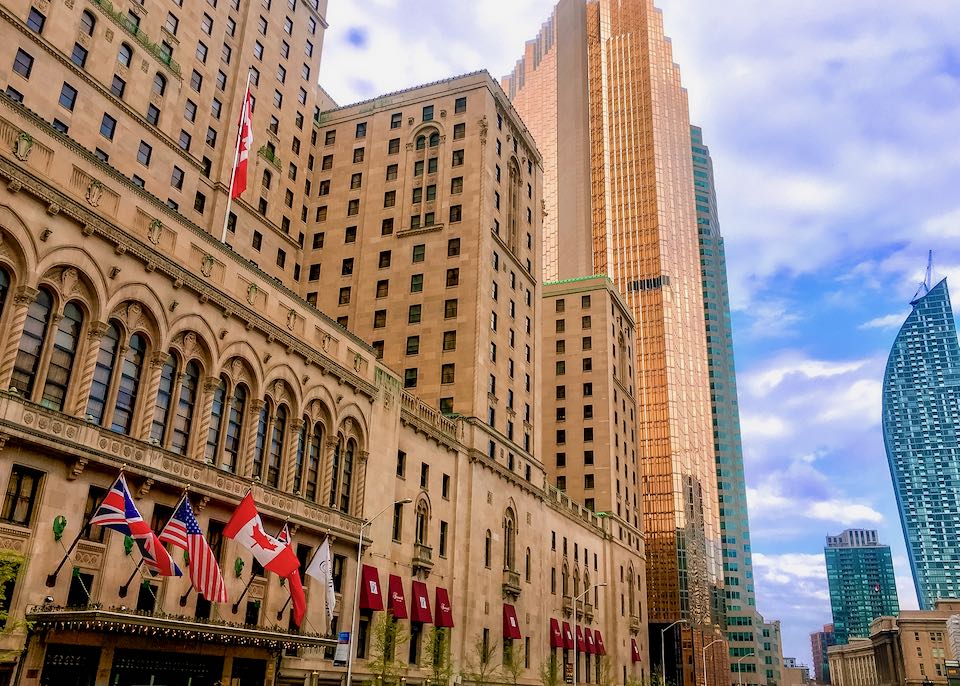
The Fairmont Royal York Hotel in downtown Toronto.
1. Downtown: Entertainment District & Financial District
Most first-time visitors (and business travelers) end up in Toronto’s busy downtown core. It’s not a bad place to be based – all the major transport hubs are here, some of the best hotels, and also some of the city’s biggest attractions. It’s also close to the lakeshore. Just remember that there’s a lot more to Toronto – you’ll need to leave Downtown to really experience the city. Downtown Toronto or the “City Center” actually covers several neighborhoods, but at its heart lies the glittering high-rises of the Financial District, and the adjacent Entertainment District. Though there are still plenty of bars and decent restaurants here, Toronto’s hippest nightlife and culinary scenes have moved on, and the Entertainment District is best known as being the location of the CN Tower, the Rogers Centre, home of baseball’s Toronto Blue Jays, and the family-friendly Ripley’s Aquarium of Canada. Aficionados of old steam engines will enjoy the Toronto Railway Museum. You can also catch a musical or play at the Royal Alexandra or Princess of Wales theaters. The stylish glass dome of Roy Thomson Hall is the home of the Toronto Symphony Orchestra. Behind Union Station lies Scotiabank Arena, concert venue and home base of the NBA’s Toronto Raptors and the NHL’s Toronto Maple Leafs.
There’s not much to see in the Financial District itself, though it’s fun to wander the underground tunnels and shops of PATH, the world’s largest subterranean shopping mall. It’s also worth checking out the TD Gallery of Indigenous Art (79 Wellington St), with its especially strong collection of Inuit sculpture, and the Hockey Hall of Fame, tribute to Canada’s national sport (which displays the original Stanley Cup).
Separated from the rest of Downtown by the Gardiner Expressway, the Harbourfront/South Core neighborhoods lie on the Lake Ontario shore, former docklands transformed into pleasant parks studded with condos and waterside restaurants. The area is anchored by the Harbourfront Centre and Harbour Square Park, with ferries to the Toronto Islands departing the Jack Layton Ferry Terminal. To the east, Sugar Beach is a sunbathing and Instagram favorite in the summer.
• There are cheap motels in and around Downtown, but most of these are poor quality and often serve as budget long-term accommodation.
• At 1,815ft (553 meters), the CN Tower has long been surpassed as the world’s tallest free-standing structure (it’s now 10th), but the views from the revolving restaurant and observation deck are still mesmerizing. For extra thrills, try the Edgewalk, where you can stroll around the outside of the tower attached to a harness.
- The Best Hotels in Entertainment District & Financial District
Bisha • Hotel phone: +1 437 370 8142
Delta Hotels • Hotel phone: +1 416 849 1200
Fairmont Royal York • Hotel phone: +1 416 368 2511
Le Germain Maple Leaf Square • Hotel phone: +1 416 649 7575
Le Germain Mercer • Hotel phone: +1 416 345 9500
Omni King Edward • Hotel phone: +1 416 863 9700
One King West • Hotel phone: +1 416 548 8100
Ritz Carlton • Hotel phone: +1 416 585 2500
Shangri-La • Hotel phone:+1 647 788 8888
St. Regis • Hotel phone: +1 416 306 5800
Marriott City Centre • Hotel phone:+1 416 341 7100- Harbourfront/South Core
Radisson Blu Downtown • Hotel phone:+1 437 886 9667
Westin Harbour Castle • Hotel phone:+1 416 869 1600- Best Cheap/Midrange Hotels:
The Clarence Park • Hotel phone: +1 416 591 7387
King Blue • Hotel phone: +1 416 915 37702. Downtown: Yonge-Dundas
Another popular place to stay, the Yonge-Dundas section of Downtown lies just to the north of the Financial and Entertainment districts but the vibe is quite different. Anchored by Yonge-Dundas Square, the focus here is squarely commercial, with the streets crammed with mainstream stores and boutiques. The CF Toronto Eaton Centre dominates the shopping scene, but there are some other things to see, especially around Nathan Phillips Square; the 3D Toronto Sign, grand Old City Hall (and the less picturesque Toronto City Hall), Textile Museum of Canada, and a few blocks west, the stylish Art Gallery of Ontario. The latter is one of Canada’s best museums, displaying Rubens’ famed Massacre of the Innocents, rare Canadian 18th-and 19th-century painting, work from Canada’s Group of Seven, and the world’s largest collection of sculptures by Henry Moore. You can also check out shows at the beautiful Elgin and Winter Garden Theatre and Massey Hall.
• There are some great places to eat and drink in this neighborhood; we love Queen and Beaver Public House and Fran’s Restaurant, inventor of the bacon cheeseburger in 1941. The Urban Eatery Food Court at the basement of the Eaton Centre is also pretty good.
- The Best Hotels in Yonge-Dundas
DoubleTree Downtown • Hotel phone:+1 416 977 5000
Marriott Downtown at CF Eaton Centre • Hotel phone: +1 416 597 9200
The Saint James Hotel • Hotel phone: +1 416 645 2200
Sheraton Centre • Hotel phone:+1 416 361 1000
The Ivy At Verity • Hotel phone: +1 416 368 6006- Best Cheap/Midrange Hotels:
The Chelsea • Hotel phone:+1 416 595 1975
The Rex • Hotel phone: +1 416 598 2475
Yonge Suites • Hotel phone: +1 416 477 70003. Queen’s Park/University (Discovery District)
North of Downtown, University Avenue runs past Toronto General Hospital into the vast University of Toronto campus, anchored by the green swathe of Queen’s Park (the southerly section of the area is also known as the Discovery District). With its gardens and sandstone architecture the campus is a pleasant place for a stroll (especially Philosopher’s Walk), and the park itself features the handsome Legislative Assembly of Ontario building, the seat of provincial government since the 1890s (tours available). The university’s Thomas Fisher Rare Book Library holds original work by Canadian writers such as Margaret Atwood and Leonard Cohen. North of the park are two of the city’s top museums: the absorbing ceramic art collection (including rare Mesoamerican pieces) at the Gardiner Museum, and the sprawling Royal Ontario Museum. The latter contains a vast collection of international art, a first-class Chinese art collection, lots of dinosaur fossils, and a fascinating First Peoples gallery that includes the original war bonnet and war shirt of Sitting Bull. Nearby, the Royal Conservatory of Music presents classical music concerts.
• Other than student-oriented accommodation on campus, there is no lodging here. The neighborhood is close to hotels in Yorkville and Annex, however, and there is one excellent B&B on its southern fringes.
- Best B&B in Queen’s Park/University (Discovery District)
Beverley Place • Hotel phone:+1 416 977 00774. Yorkville
North of the university, Yorkville has morphed into Toronto’s most glamorous neighborhood, home to high-end boutiques and posh restaurants – it’s also home to some of the city’s most luxurious hotels and is a fun alternative to Downtown, if you can afford it. It’s also convenient for the Royal Ontario Museum and Gardiner Museum on the main drag, Bloor Street West, known here as “Mink Mile.” Bloor, along with adjacent Yorkville Avenue, is peppered with the likes of Chanel, Christian Louboutin, Dolce & Gabbana, Gucci, Prada and Louis Vuitton boutiques. There’s not much else to do here, though there are plenty of places to eat or drink, and it’s easily accessible from Downtown.• In winter (January/February), the freezing days are enlivened by the Bloor-Yorkville Icefest held in the Village of Yorkville Park.
• The Toronto outpost of Italian food market Eataly is here.
- The Best Hotels in Yorkville
The Anndore House • Hotel phone: +1 416 924 1222
The Four Seasons • Hotel phone: +1 416 964 0411
The Hazelton • Hotel phone: +1 416 963 6300
Windsor Arms • Hotel phone:+1 416 971 9666
W Toronto • Hotel phone: +1 416 961 8000
Yorkville Royal Sonesta • Hotel phone:+1 416 960 52005. Old Town and around
Just to the east of Downtown, the area known as Old Town encompasses the original 10 blocks of the city of York, founded in the late 18th century (the name was changed to Toronto in 1834). Numerous Victorian remnants remain, such St. James Anglican Cathedral and the First Toronto Post Office, though the biggest tourist attraction today is the pop-up Museum of Illusions. Built in 1850, St. Lawrence Market features 120 specialty vendors, a Saturday Farmers’ Market, and Sunday Antique Market. The nearby Gooderham Building dates from 1892, its striking redbrick design making this Toronto’s “flatiron building”.
A short walk or streetcar ride east lies the pedestrianized Distillery District, a former industrial distillery complex converted into galleries and indie boutiques. The complex of over forty brick buildings dates back to the 1830s, and its cobblestone streets and Victorian industrial architecture remain extremely atmospheric. Highlights include the Mill Street Brewpub, Yummi Candles, contemporary artwork at the Corkin Gallery, performances at the Nightwood Theatre, treats at SOMA Chocolatemaker, and the annual Toronto Christmas Market.
You might also want to check out neighboring Corktown, a primarily residential neighborhood (named after its historically Irish residents) with a smattering of historic buildings: St. Paul’s Basilica, Little Trinity Church, and the Enoch Turner School House. There are also plenty of great places to eat here, like Roselle Desserts and Beirut-style Souk Tabule.
Cabbagetown lies just to the northeast of Old Town, anchored by Parliament Street. It’s another intriguing neighborhood to explore on foot, with plenty of refined Victorian architecture, cafés, pubs, and restaurants. Allan Gardens is a park and an indoor botanical garden with six greenhouses, including the glass-domed “Palm House” of 1909, while kids will enjoy the working Riverdale Farm. The Toronto Dance Theatre is also based up here.
• Old Town or any of the surrounding neighborhoods would make a fun place to stay, but there’s not much choice when it comes to hotels – it’s very easy to visit from Downtown. To get away from the tourists, consider Cabbagetown.
• St. Lawrence Market is full of food stalls and is a great place to eat; try the “World Famous Peameal Bacon Sandwich” at Carousel Bakery, or Kozlik’s Canadian Mustard.
- The Best Hotels in Old Town
The Broadview • Hotel phone: +1 416 362 8439
Holiday Inn Express Downtown • Hotel phone: +1 416 367 5555- The Best Hotels and B&Bs in Cabbagetown
A Seaton Dream • Hotel phone: +1 416 929 3363
Comfy Guest House • Hotel phone: +1 416 822 55906. Waterfront & Toronto Islands
Toronto’s regenerated Waterfront district southwest from Downtown looks out to the Toronto Islands, a chain of 15 interconnected islets just offshore in Lake Ontario. Originally a sandbar, the islands were cut off from the mainland after a devastating storm in 1858. In the summer especially, the white-sand beaches, views of the city, and Centreville Amusement Park make the islands a major family-friendly destination, accessible by ferry from the Jack Layton Ferry Terminal, at the foot of Bay Street at Queens Quay. You can walk or bike around the islands – use of motor vehicles is restricted. Centre Island features an amusement park, animal petting zoo, old Gibraltar Point Lighthouse, 1880s St. Andrew’s by the Lake Church, and some excellent beaches. Centre Island merges into Ward’s Island, which boasts some of the best views of Toronto, the Island Café, another gorgeous beach, and the Riviera restaurant.
• The islands area wonderfully tranquil place to escape the city for the day, though at present there are no hotels or formal accommodation options.
• Rent bikes at Toronto Island Bicycle Rentals.
• Most locals regard Lake Ontario as too polluted (and too cold) for swimming; most visitors stick to sunbathing.
- The Best Hotels in Waterfront
Hotel X Toronto • Hotel phone:+1 647 943 9300
Making Waves Boatel • Hotel phone:+1 647 403 27647. Westside
The Westside of Downtown Toronto – essentially everything west of Spadina Avenue – comprises some of the most fashionable parts of the city. Though there are only a few places to stay here, it’s easy to reach from Downtown. The Westside is a patchwork of neighborhoods, best known for eating, drinking, and shopping rather than conventional tourist sights. Among the highlights are Little Italy and Kensington Market (see best neighborhoods for eating, above) and King Street West (see above), another hub for shopping and nightlife.
Centered on the junction of Spadina and Dundas, Chinatown is one of Toronto’s oldest neighborhoods, with a community that goes back to the 1870s. It’s cchock-full of food stalls, markets, and excellent restaurants (Chinese, Japanese and Vietnamese among them). Don’t miss Sonic Boom, a vast music store.
Koreatown runs along Bloor Street between Christie Pits Park and the Annex to the east, lined with Korean fashion boutiques, spas, karaoke bars, Korean restaurants, bakeries such Hodo Kwaja (for walnut cake), and the fish-shaped cakes at Kevin’s Taiyaki (675 Bloor St). To the southwest, Liberty Village is a hip residential area popular with young professionals and creatives, with its own spread of local bars and restaurants. Nearby BMO Field is home to Toronto FC of Major League Soccer, and Canadian Football League’s Toronto Argonauts.
Little Portugal is a multicultural neighborhood centered on Dundas West, a burgeoning nightlife and entertainment strip (between Dover court and College streets). Traditionally home to Portuguese and Brazilian immigrants, their legacy lives on in a handful of restaurants and traditional Portuguese bakeries – head to Caldense Bakery for a pastel de nata. Other highlights include the art photography at Stephen Bulger Gallery, and the gifts and home decor at Saudade Toronto. The small but chic Ossington neighborhood (essentially Ossington Avenue between Dundas and Queen streets) is another flourishing nightlife district, with bars ranging from Southern-style Dakota Tavern (249 Ossington Ave) to Bellwoods Brewery. The ice cream sandwiches at Bang Bang Ice Cream & Bakery have achieved cult status, while Rotate This is another great independent vinyl store.
There’s also Little Tibet and Queen West (Queen Street West), a hub of the city’s best restaurants, cafés, indie boutiques, and art galleries. Highlights include selfie heaven Graffiti Alley (made famous in Canada by CBC’s Rick Mercer Show). What’s known as “West Queen West” (the strip between Strachan to Dufferin) has become even more fashionable, with lots of places to drink, dance, eat and shop. This is also the only part of the Westside you can find decent hotels.
• The biggest tourist attraction on the Westside is Fort York National Historic Site, a reconstruction of the original British outpost established here in 1793. Costumed guides add authenticity and exhibits highlight colonial life.
- The Best Hotels in Westside
1 Hotel • Hotel phone: +1 416 640 7778
The Drake • Hotel phone: +1 416 531 5042
The Gladstone House • Hotel phone: +1 416 531 4635- Best B&Bs
By The Park • Hotel phone: +1 416 520 6102- Best Cheap/Midrange Hotels
Hotel Ocho • Hotel phone: +1 416 593 0885
The Palmerston • Hotel phone: +1 416 203 8999- Best Hostels
Parkdale Hostellerie • Hotel phone: +1 416 855 4606
The Planet Traveler • Hotel phone: +1 647 352 8747
Samesun Toronto • Hotel phone: +1 416 929 4777Recommended Toronto Hotels by Feature
- Hotels with Indoor Pool
Royal Sonesta • Windsor Arms • Four Seasons • Fairmont Royal York • The SoHo • Ritz-Carlton • Shangri-La • DoubleTree by Hilton • Delta Toronto Hotel • The Chelsea • Westin Harbour Castle • Grand Hotel Toronto • Marriott City Centre- Hotels with Outdoor Pool
Radisson Blu Downtown • Sheraton Centre- Hotels with Kitchen
The Chelsea • Four Seasons • Le Germain Mercer • One King West • Delta Toronto Hotel • Executive Hotel Cosmopolitan- Hotels with Balcony and View
Four Seasons • Ritz-Carlton • Shangri-La • One King West • Radisson Blu Downtown • Westin Harbour Castle- Family-Friendly Hotels
The Chelsea • Four Seasons • Ritz-Carlton • Shangri-La • Hilton Toronto • Fairmont Royal York- Pet-Friendly Hotels
Kimpton Saint George • Windsor Arms • Four Seasons • W Toronto • The SoHo • Le Germain Mercer- Airport Hotels
Alt Hotel • Element • Embassy Suites • Residence Inn • Sheraton Gateway Hotel • Four Points by Sheraton • Delta Hotels Toronto Airport & Conference CentreMore Toronto Neighborhoods
We’ve covered our favorite neighborhoods to visit and stay in more detail above, but with more time these districts are also worth checking out:
- Don Valley: The Don River northeast of Toronto is lined by parkland and features a couple of major attractions worth checking out. Art lovers shouldn’t miss the beautiful Aga Khan Museum, which focuses on Islamic art, while families could spend half a day at the Ontario Science Centre. The only place to stay around here is Toronto Don Valley Hotel & Suites, but it’s a short bus ride or taxi ride from the Downtown neighborhoods.
- Eastside: The east end of Toronto broadly covers the patchwork of diverse neighborhoods that lie east of the Don Valley Parkway.There are no major sights over here, but plenty of intriguing arts and culinary scenes to explore, beginning with Danforth/Greektown for the city’s best Greek food (along Danforth Avenue), East Chinatown (Gerrard Street around Broadview), and Little India along another stretch of Gerrard Street (between Coxwell and Greenwood). Over on the Lake Ontario shore, The Beaches is a genteel Victorian suburb with tranquil parks, wide, sandy beaches and a host of restaurants and independent boutiques along Queen Street. The Eastside is fairly bereft of hotels, and it’s much more common to rent an apartment here or visit from the city center. Right on the main Danforth strip, The Only Backpacker’s Inn is a great budget option.
- Etobicoke and Airport: Suburban Etobicoke was a separate city until it was absorbed by Toronto in 1998, and lies some 8 miles (13km) west of Downtown. Staying here is really only worthwhile if you need to access the international airport early or late, or you want to use it as a base for exploring the Greater Toronto area by car – there are much cheaper motels and hotels here. We like Old Mill Toronto Hotel and The Westlake Hotel in Etobicoke itself. For the airport, we like Alt Hotel, Element, Embassy Suites, and Residence Inn.
Toronto › Best Hotels
Updated: July 8, 2023
By Santorini Dave
Our Favorite Hotels in Toronto
• 5-Star: Shangri La
• 4-Star: Delta Hotels
• 3-Star: King Blue
• For Families: Chelsea
• For Couples: Bisha
• Best Pool: Marriott
• Near Airport: Sheraton
• Train Station: Fairmont Royal York
Where To Stay in Toronto
- Best Neighborhoods in Toronto for Visitors: Entertainment District (most major attractions are located here) • Yorkville (high-end boutique and name brand shopping, fine dining) • West Queen West (young, trendy, artsy vibe) • Financial District (convenient to attractions; quiet at night) • Harbourfront (right on Lake Ontario, great shoreline walking path).
- Best Hotels in Toronto: Shangri La Toronto (luxury in the Entertainment District) • Four Seasons (luxury in Yorkville) • The Gladstone (Old Toronto charm) • The Drake (boutique hipster) • Windsor Arms (boutique luxury) • The Chelsea (great for families)
- The best restaurants in Toronto are ARDO Restaurant (modern Sicilian), Patria (upscale Spanish cuisine), The Oxley Public House (British gastropub), Tea N Bannock (First Nations food), Nom Nom Nom (Toronto’s best poutine), and Ciao Europa Café (best brunch).
- If you’re visiting during colder months, consider booking a hotel that is connected to the PATH, Toronto’s underground pedestrian walkway. At over 30 kilometers long, the PATH connects more than 50 buildings, five subway stations, two malls, and several attractions. A PATH connection allows for access to the city’s best in the dead of winter without ever putting a coat on.
- Toronto is a great town for walking and transit. Most of the city is serviced by two main subway lines, one U-shaped and the other intersecting the first. It’s clean, fast, and reliable. Use the subway or hoof it whenever possible. You’ll save money and usually time over cabs or Ubers.
- For a more authentic bar scene, stay out of downtown and go where the locals go: Head to the south end of Ossington Avenue, between Queen and Dundas Streets West, for the best three blocks of bars and restaurants in the city. Or make a day of it, and check out the galleries and boutiques in the area.
The 24 Best Hotels in Toronto
1. Shangri La Toronto – Entertainment District
(Hotel phone: 647.788.8888)
The best luxury hotel in Toronto. Contemporary and fashion-forward hotel that boasts sleek, Asian-inspired décor, including walls dressed in raw silk. Floor to ceiling windows in spacious rooms and suites offer dramatic views of downtown Toronto, while Italian and Madagascar marble walls give a decadent feeling to the bathrooms. The spa offers traditional Middle Eastern services, along with Vinotherapie, that is, wine-based treatments for skin and body. The bar and lounge are surprisingly fun and funky, and neighboring Momofuku (directly connected to the lobby) has a noodle floor and steak floor (both excellent).2. Four Seasons Hotel – Yorkville
(Hotel phone: 416.964.0411)
A sumptuous hotel with brilliant amenities, including the largest spa in the city and an indoor pool. Their stylish rooms are spacious, sunny, and well-appointed, while their chic, French lounge offers craft cocktails and has a DJ spinning every night. The aim here is to make guests’ wishes come true, an idea reflected in the décor’s motif of dandelions. Centrally located in Yorkville, just steps from the best dining and shopping in town.3. Fairmont Royal York – Financial District
(Hotel phone: 416.368.2511)
Built in 1929, this landmark hotel’s recent renovations added modern luxury rooms and signature suites, an updated pool and health club, and a refresh of all historic rooms. Expect a level of service befitting royalty with the setting to match: hand-painted ceilings, crystal chandeliers, travertine columns, and marble. Located just inside the Financial District, bordering the Entertainment District, the property is walking distance to theaters, attractions, dining, plus it’s connected to the PATH.4. Le Germain Mercer – Entertainment District
(Hotel phone: 416.345.9500)
Sophisticated yet cozy, this boutique hotel is light and bright in the entry, with two-story windows and blond wood throughout, and muted and relaxed in the guest rooms, which feature dark felt walls. Peekaboo glass showers with wood blinds and bubble showerheads are a signature feature in all rooms. This hotel has strong connections to the literary world, with many traveling authors and publishers staying here; their books line the shelves in the lobby library. Breakfast is always included in the room rates.5. Ritz-Carlton – Entertainment District
(Hotel phone: 416.585.2500)
The height of New Canadian elegance, the Ritz features 450 artworks by Canadian artists and a maple leaf inlay floor. Their signature restaurant, Toca, ages their own cheeses on site and offers tours of the cheese cave daily. Just across the street from where the red carpet rolls out for TIFF, this is a popular spot for celeb sightings. Close to the city’s best theaters, restaurants, and attractions.6. The Drake Hotel – West Queen West
(Hotel phone: 416.531.5042)
Trendsetting boutique hotel and artistic hub, The Drake has a quirky, hipster vibe with lots of bright murals, patterned floors, vintage stereo parts on the shelves, and exposed brick walls. Room amenities include a creepy, handmade doll and an extensive menu of adult novelties. Their year-round, heated, rooftop patio, Sky Yard, is one of the best in the city. Live music, DJs, foodie events, film screenings, and poetry slams happen seven nights a week here. Walking distance to Ossington Avenue nightlife and funky boutiques.7. Omni King Edward – Financial District
(Hotel phone: 416.863.9700)
The theme at this historic property is royalty, with ornate crown moldings, portraits of monarchs, and oversized chess pieces in the lobby. Plenty of cozy nooks for couples, as well as family amenities, like afternoon tea with a court jester for kids. This boutique-style hotel houses a salon and a spa. The “King Eddie” is located near the Financial District, walking distance to dining on King Street and most major attractions.8. Gladstone Hotel – West Queen West
(Hotel phone: 416.531.4635)
Built in 1889, this is the oldest continually operating hotel in Toronto. Each of the 37 rooms has been designed by a different local artist, while preserving the original Victorian floorplan, with the result that each room is completely unique. The Billio Room features antiques from the original opening of the Gladstone, while the Teen Queen is decorated with photos of ‘80s heartthrobs, and the Offset is a conceptual room within a room. The Gladstone houses three art galleries and hosts live music and adult coloring nights. This is in the trendy neighborhood of West Queen West, near nightlife, bars, and cutting edge restaurants.9. Windsor Arms Hotel – Yorkville
(Hotel phone: 416.971.9666)
A true boutique hotel, Windsor Arms has only 28 suites, but it has all the amenities you would expect from a large resort, including a pool, spa, salt cave, and a screening room, plus 24 hour butler service. All rooms include a musical instrument; either a guitar, harp, or baby grand piano. Perfectly situated in near all the upscale shopping and fine dining in Yorkville but on a quiet side street away from all the hubbub.10. Marriott City Centre – Entertainment District
(Hotel phone: 416.341.7100)
This contemporary hotel is attached to the Rogers Centre, home of the Blue Jays. 70 rooms, suites, and the restaurant overlook the baseball diamond, a striking view even when there’s not a game on. Bi level suites are available, with floor to ceiling windows hovering over the outfield, looking toward home plate. This property also houses the largest indoor pool in Toronto and offers physiotherapy for guests. Right next to CN Tower and Ripley’s Aquarium and only a short walk to Scotiabank Arena, home of the Maple Leafs and the Raptors.11. Park Hyatt Toronto – Yorkville
(Hotel phone: 416.925.1234)
Understated elegance with rich woods, wrought iron, and gold accents throughout. This hotel is best known for their heated rooftop lounge, one of only a handful in the city to stay open year-round, as well as their kosher banquets. Located in the heart of Yorkville, just across the street from the Royal Ontario Museum, this is an ideal spot for exploring local galleries, high-end boutiques, and stylish restaurants.12. Radisson Blu Downtown – Harbourfront
(Hotel phone: 416.203.3333)
Sunny hotel on the water, offering unmatched views of the marina and Toronto Islands. All view rooms come with telescopes and California shutters, and some boast fireplaces. There is a heated outdoor pool here, with deck views from the foot of the CN Tower. Harbourfront Centre, the pet museum, and a brew pub are right at your doorstep, while downtown attractions are just minutes away on foot.13. Le Germain Maple Leaf Square – Entertainment District
(Hotel phone: 416.649.7575)
Boutique hotel with sophisticated, sport-themed décor, including commissioned photographs of Toronto professional athletes. Expect luxury-level service with an unpretentious attitude and a lively atmosphere. All rooms include Le Germain’s signature peekaboo shower and daily breakfast. This hotel sits right near the stadiums, CN Tower, and aquarium, walking distance to theaters and the Financial District.14. Royal Sonesta – Yorkville
(Hotel phone: 416.960.5200)
This hotel has a sleek, hip design with cherrywood walls framing local, graffiti art. Its rooftop bar, SkyLounge, was awarded best patio bar in the city and was featured in O Magazine (open evenings May through October). Catering to international travelers, over 36 languages are spoken by staff here. Located in the cultural corridor of Yorkville, right across the street from the Royal Ontario Museum, near upscale boutique and brand name shops.15. Delta Toronto Hotel – Entertainment District
(Hotel phone: 416.849.1200)
This 40 story hotel built in 2014 is the tallest in the city and offers breathtaking city and lake views. All aspects of the building, from the architecture to the light fixtures, were created by Canadian designers. They’re so local, they even distill their own whiskey here! This is a sunny and light-filled space with two story windows, white oak, and a rainbow palette. Located in the brand new SoCo corner of the Entertainment District, close to all major attractions and connected to the PATH.16. The SoHo Hotel – Entertainment District
(Hotel phone: 416.599.8800)
Boutique-style, low-key luxury. Lots of celebs stay here during TIFF to avoid the crowds. Expect contemporary style, spacious rooms, heated floors, and deep soaking tubs. Suites are available here, but they also have the capacity to connect up to four guest rooms together for larger groups. Perfectly located near King Street dining and Queen Street shopping in a very walkable neighborhood.17. Sheraton Centre Toronto Hotel – Financial District
(Hotel phone: 416.361.1000)
Spacious hotel with a two and a half acre waterfall garden. This hotel is home to the only year-round, heated indoor/outdoor pool in the city, and they offer large Cabana Rooms that open onto the pool deck. Partnered with the Mirvish Theatre and MLB, the Sheraton offers several unique experience packages for guests. Their convenient location is close to shopping at Eaton Centre, near Yonge-Dundas Square, and connected to the PATH.18. The Chelsea Hotel – Downtown
(Hotel phone: 416.595.1975)
This is the single largest hotel in all of Canada, with nearly 1600 rooms. Perfect for families, their kids’ pool has the only indoor waterslide in Toronto; the separate, adult pool has a hot tub. Definitely splurge for club level access; the views are superb and the food is plentiful and tasty. Located in the heart of Downtown, near Yonge-Dondas Square, Eaton Centre, and family-owned restaurants on Elm Street.19. Executive Hotel Cosmopolitan – Financial District
(Hotel phone: 416.350.2000)
With a modern, eclectic vibe, this all-suite, luxury hotel boasts kitchenettes and washer/dryer sets in all 69 rooms. Rare for Toronto, each suite also has a private balcony and floor to ceiling windows that actually open. Cozy, East Asian-inspired spa on site. Perched just outside the Financial District, this is a walkable neighborhood close to most attractions, the waterfront, and the ferry to the Toronto Islands20. Westin Harbour Castle – Harbourfront
(Hotel phone: 416.869.1600)
Urban, luxury high-rise on the water. This is a very active hotel with an indoor pool, basketball and tennis courts, and a run concierge. Spectacular views of Lake Ontario and the Toronto skyline. Unique features include murphy beds in some rooms and a rooftop bee hive. Take a stroll on the harborfront here and be sure to pass through the Music Garden, a sculpture park inspired by different forms of classical sounds.21. One King West – Financial District
(Hotel phone: 866.470.5646)
An independent, luxury, all-suite hotel in two towers. The original tower is the historic Dominion Bank, built in the late 1800s; the new tower, built in 2005, is known as The Sliver and has the largest height to width ratio in the world. It’s best known feature is its original bank vault, which has been featured in several movies, and makes for a great photo op or event space. Stellar location in the Financial District, walking distance to the Entertainment District and downtown attractions. Be sure to grab a bite or drink here at Teller’s, which features the original teller’s wickets from the old bank.22. Grand Hotel Toronto – Downtown
(Hotel phone: 416.863.9000)
Fabulous, boutique, all-suite hotel in the former headquarters of the Royal Canadian Mounted Police. The hotel is classically elegant with a graceful domed ceiling, a gorgeous indoor pool with an art glass skylight, and two rooftop hot tubs. The location is tucked away in a more private area of downtown, away from major tourist destinations, offering guests the chance to live like a local. The Grand is walking distance to the historic Distillery District for boutiques and dining, and they offer a shuttle to downtown.23. W Toronto – Yorkville
(Hotel phone: 416.961.8000)
This is a wonderful, modern hotel decked out in bright blue, white, and beige. Suites are especially nice here, particularly the bi-level options, which have a fantastic apartment feel. The Rooftop Bar and Restaurant with its Mediterranean vibe is especially inviting. Great location near the Royal Ontario Museum, The Bata Shoe Museum, shopping, and fine dining.24. DoubleTree by Hilton Toronto – Downtown
(Hotel phone: 416.977.5000)
Understated, business luxury hotel with a cosmopolitan vibe. Two great restaurant options onsite: Lai Wah Heen, an extraordinary spot for Chinese and authentic dim sum, and Hemispheres, an international-themed restaurant, featuring a different country’s cuisine every month. Superb downtown location, close to Eaton Centre, the Financial District, and the Art Gallery of Ontario.

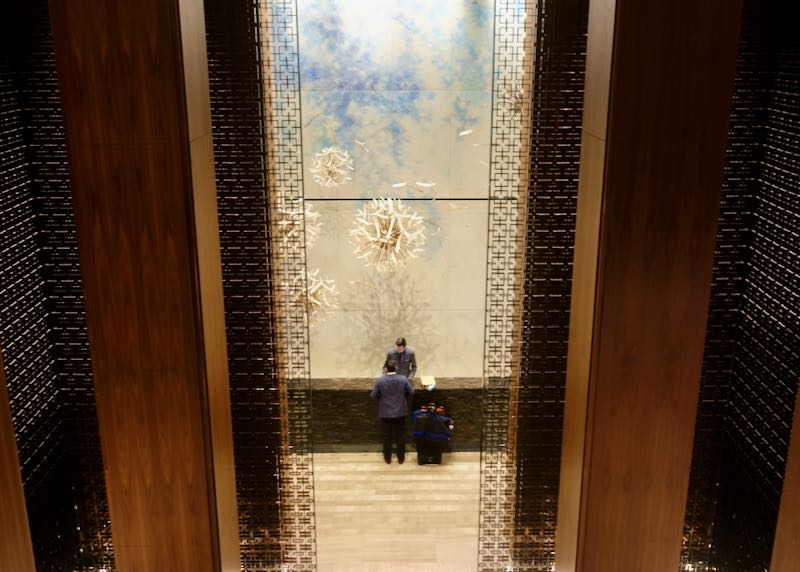
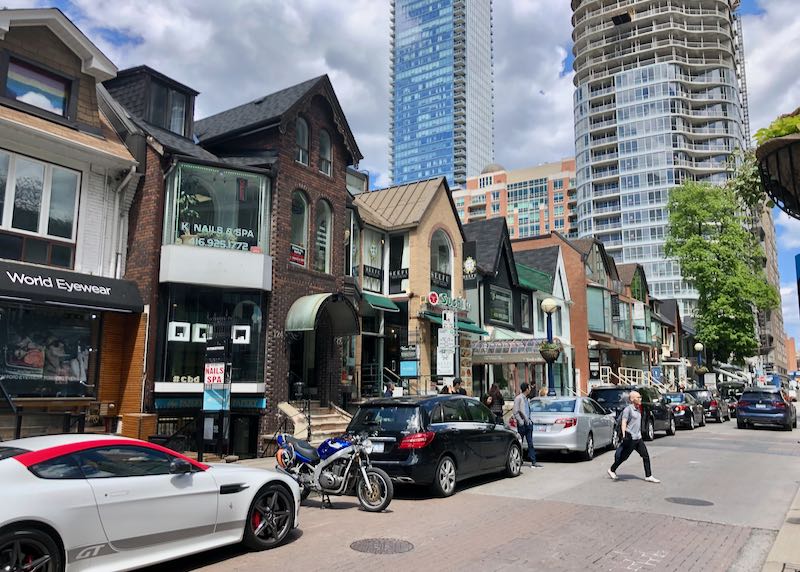
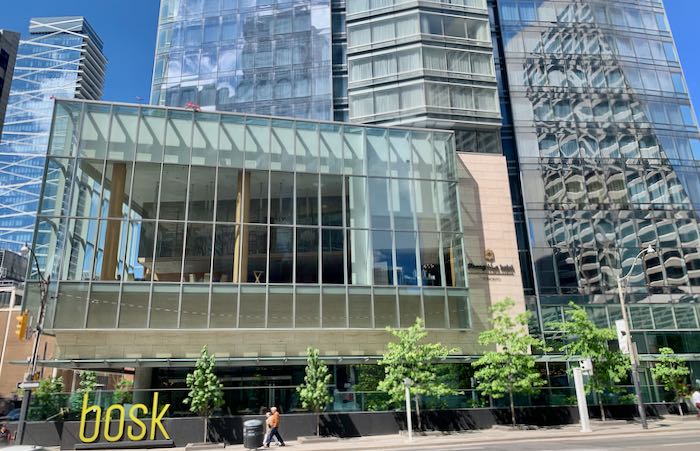
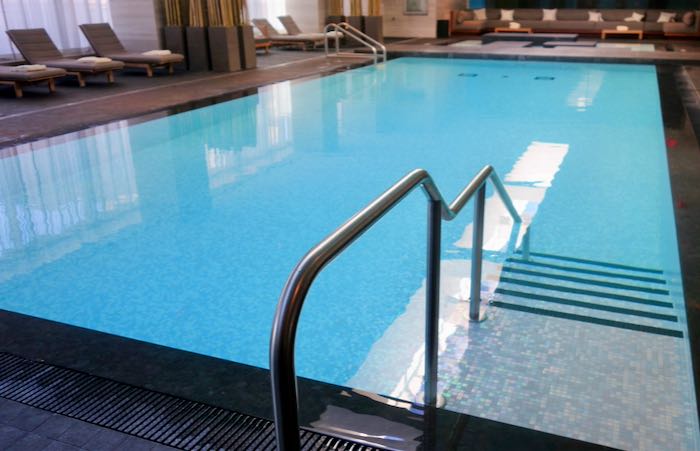
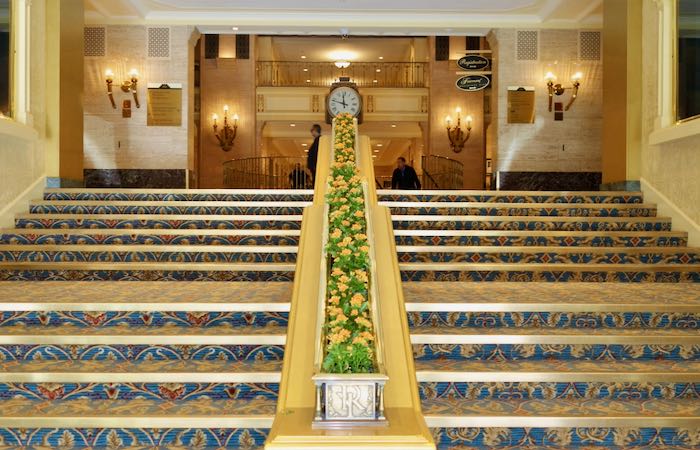
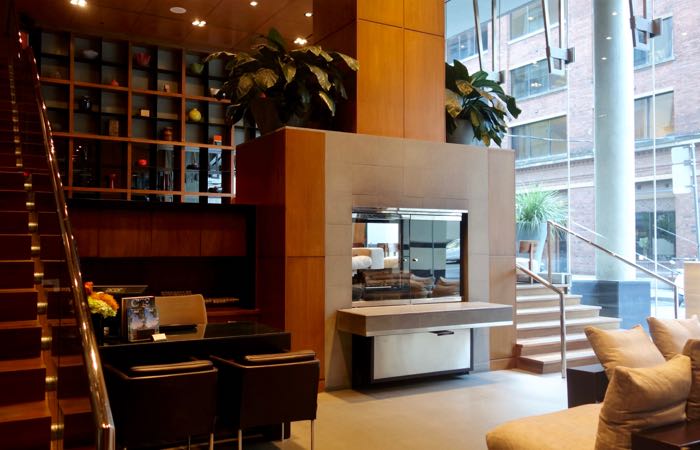
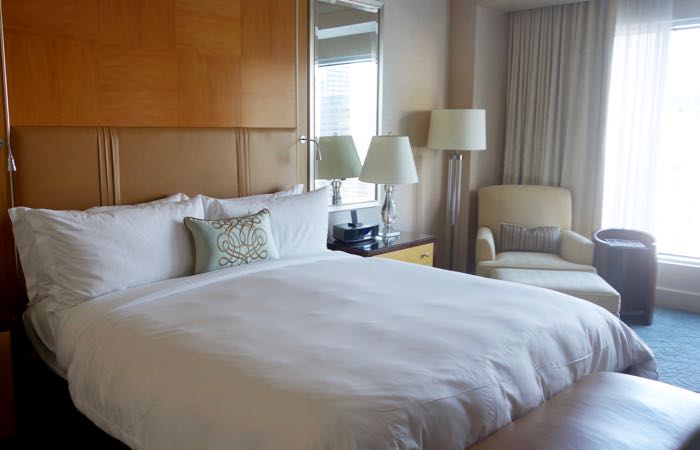
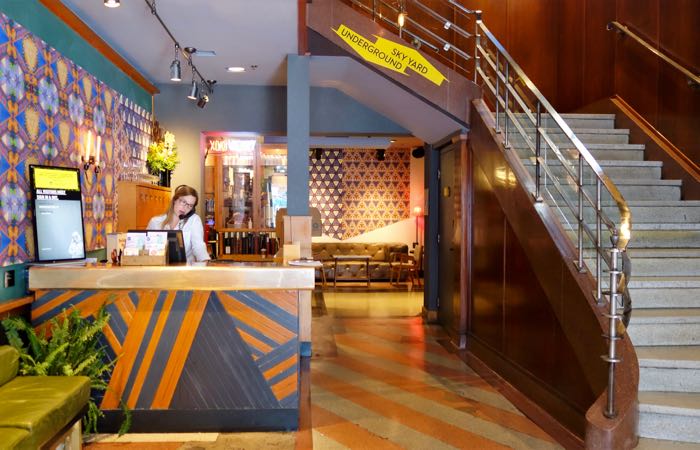
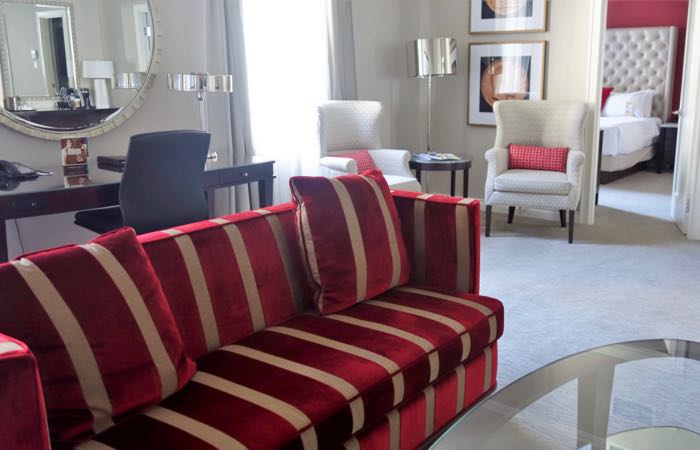
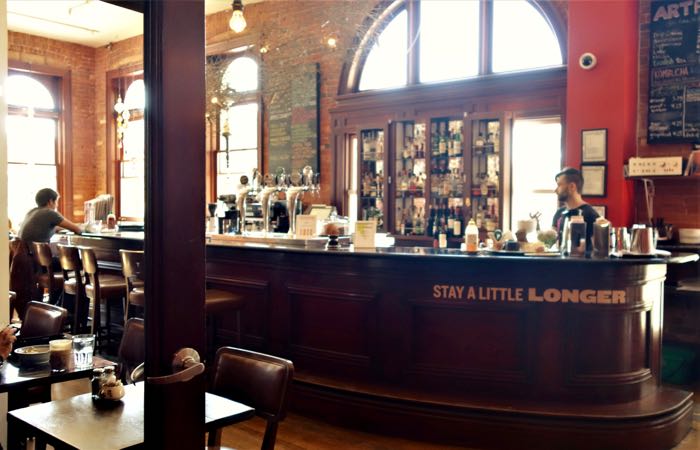
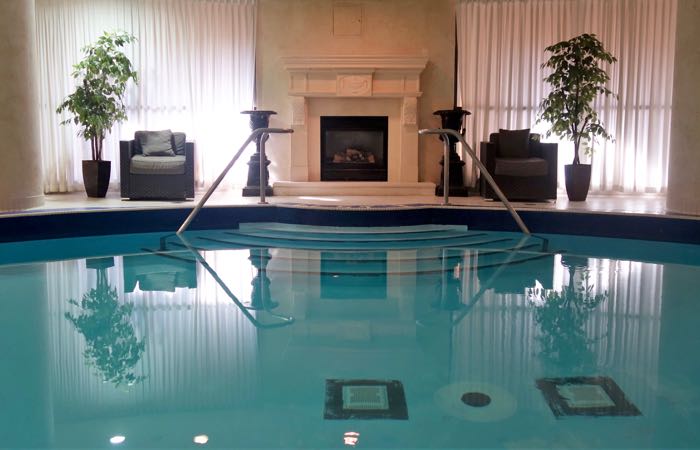
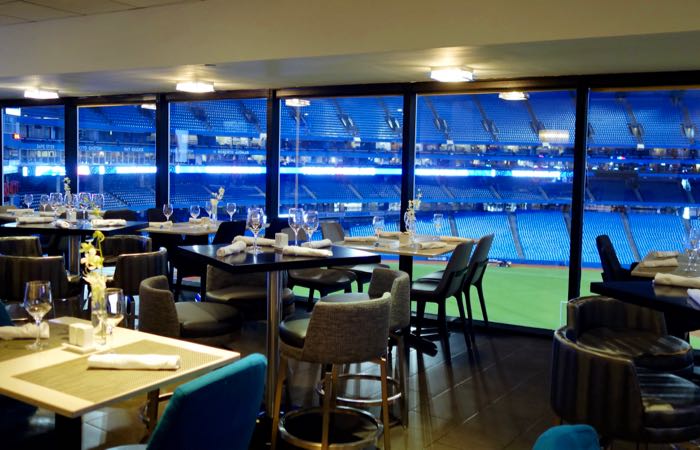
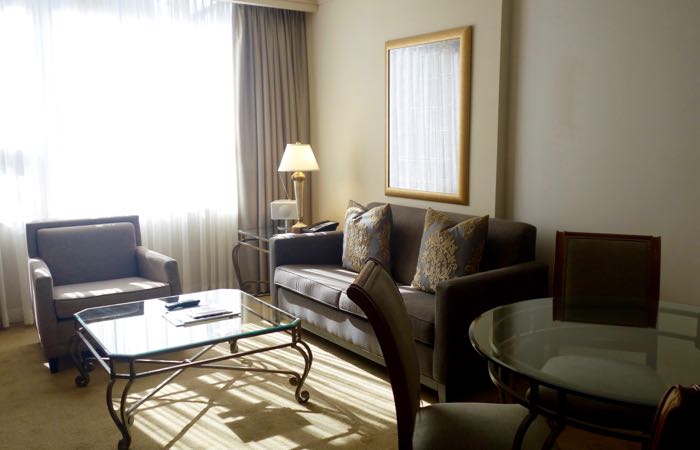
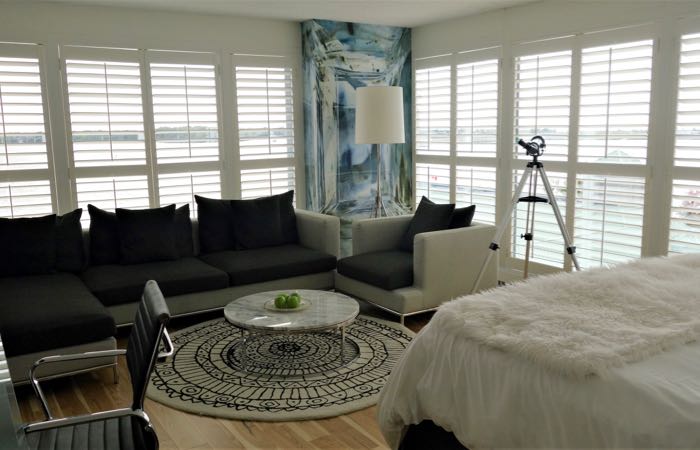

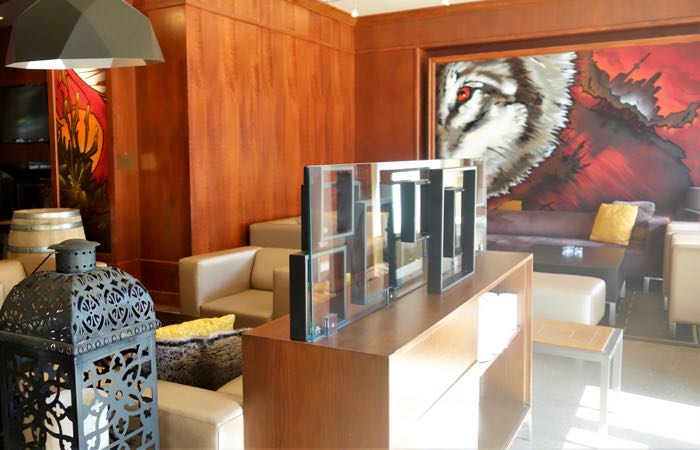
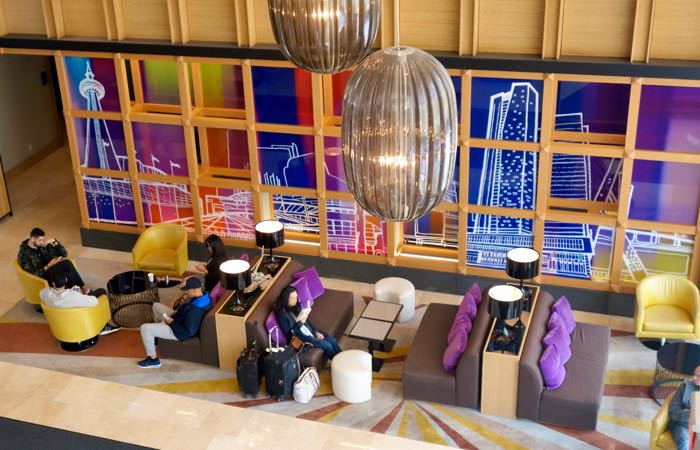
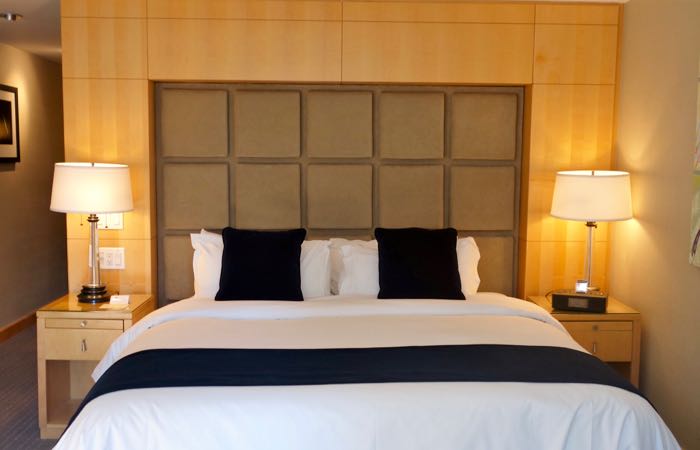
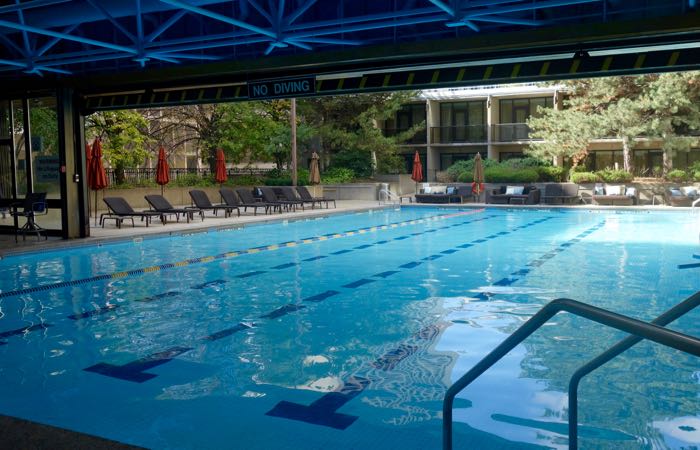
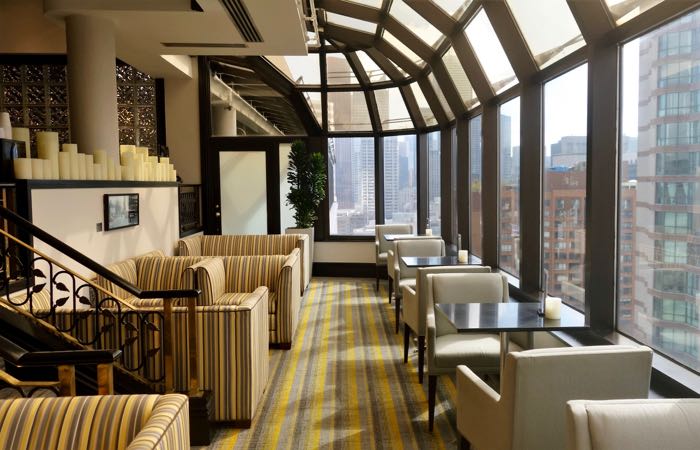
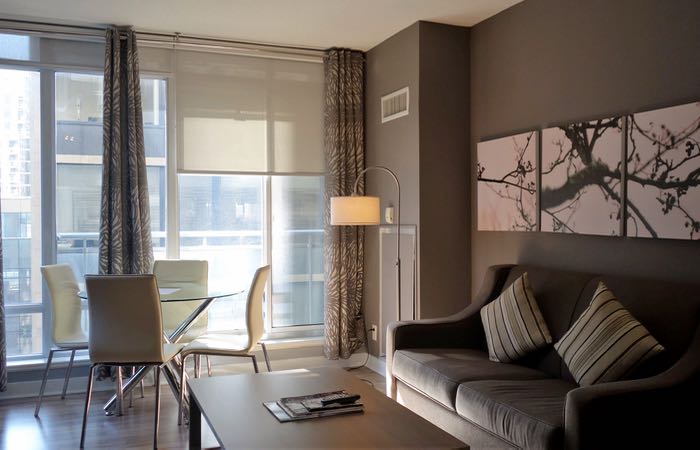
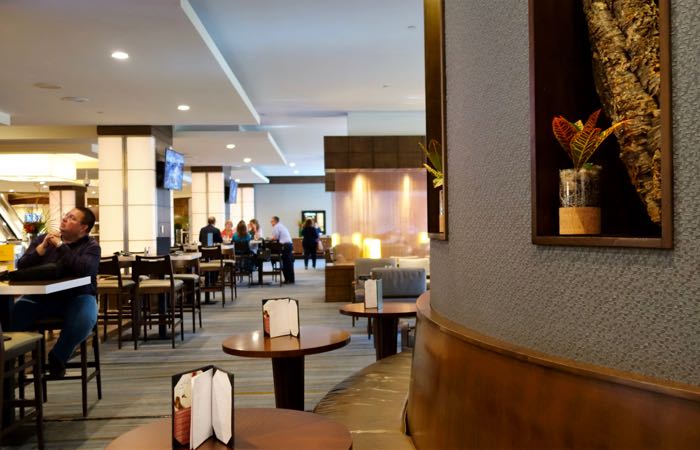
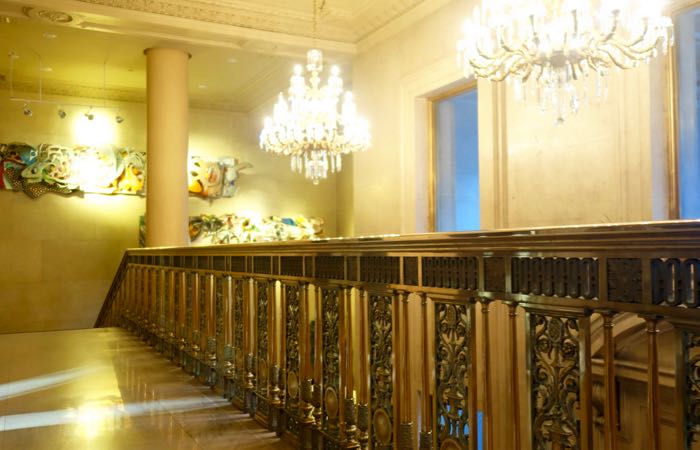
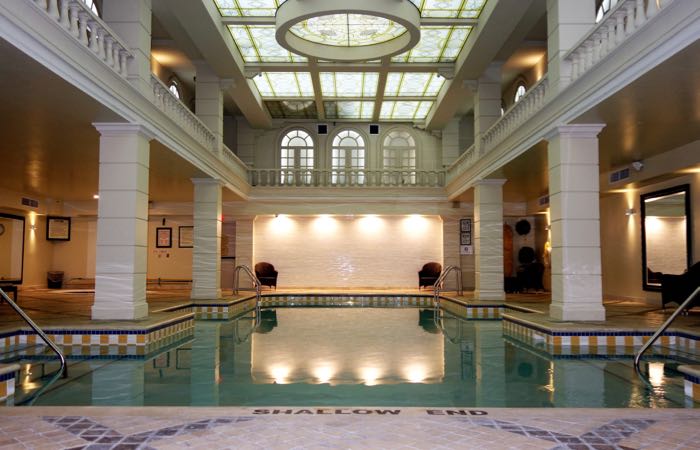
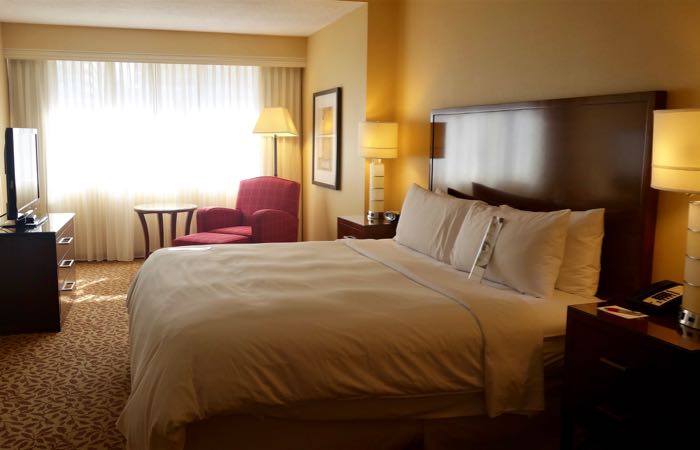
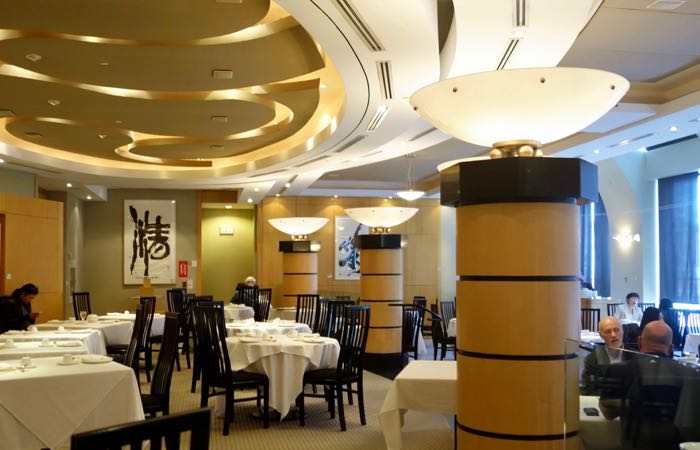
About Santorini Dave